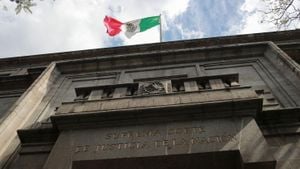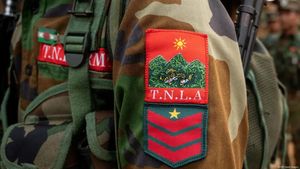NASA's ambitious project, the Boeing Starliner, was expected to bring astronauts Barry "Butch" Wilmore and Sunita Williams back to Earth after their first crewed mission to the International Space Station (ISS). Launched on June 5, the Starliner was marked as the inaugural crewed test flight for Boeing. But, unforeseen technical issues have postponed their much-anticipated return. Now, as of late August, NASA is grappling with the decision of how to go about getting the astronauts back to Earth safely.
The mission's timeline quickly took unexpected turns after the crew reached the ISS on June 6. Reports of thruster failures and helium leaks prompted NASA to reassess Starliner's capabilities for the return trip. While Wilmore and Williams were initially scheduled to spend only eight days on the ISS, they have since extended their stay as technicians work to resolve the problems plaguing the spacecraft. Steve Stich, who heads NASA's commercial crew program, recently indicated the earliest possible return could happen by the end of July. There has, as of now, been no discussion about using alternative vehicles like SpaceX's Crew Dragon for this return.
Wilmore expressed confidence about their eventual return, stating, "I have a real good feeling in my heart... the spacecraft will bring us home, no problem." Williams echoed the sentiment, adding, "It's great to be up here. I'm not complaining..." NASA's surveillance of the astronauts’ provisions reassures the public, with stockpiles of food and oxygen well-managed to support them through this delay.
The situation has become one of urgency and uncertainty. NASA officials have initiated rigorous analyses of the Starliner thrusters and their performance capabilities during descent. The engineers are evaluating whether the current model can safely land the astronauts or if alternative arrangements need to be considered. Failure to navigate this return effectively could mean leaving Wilmore and Williams stranded until February, necessitating their transfer on SpaceX’s Dragon vehicle.
Rudy Ridolfi, former chief of U.S. military space systems, outlined three potential disastrous scenarios should the Starliner attempt reentry with the astronauts aboard under malfunctioning conditions. One possibility involves the spacecraft becoming stuck during reentry attempts, another contemplates the craft bouncing off the Earth's atmosphere if aligned improperly, and the worst-case would see the loss of life due to catastrophic friction heat if the reentry angle is too steep.
Meanwhile, discussions continue about possibly evacuative solutions provided by other space vehicles. The ISRO chief, S. Somanath, noted during discussions, "Right now we can’t do anything as direct help... the only possibilities are either from Russia or the US." Just as the world awaits news about the Boeing Starliner’s fate, NASA plans to communicate action plans publicly with Bill Nelson, the NASA Administrator, expected to share the agency's findings and next steps.
Through it all, the crew aboard the ISS has remained diligent. Their work involves not just science and research, but also repairs and maintenance. Engineers back on Earth are hopeful the spacecraft's longstanding glitches can be resolved without needing to resort to outropping the Starliner. For Wilmore, Williams, and their support crew, it has become another chapter of resilience and adaptation amid challenges long associated with space flight.
Public interest remains high as NASA prepares for this pivotal news conference, anticipated to provide clarity on the astronauts' prospects of returning home aboard the Starliner or facing yet another delay. Will the astronauts be recalled to Earth, or will they be forced to wait longer on the ISS? This decision will have lasting ramifications, not just on the mission but also on future commercial space operations.



